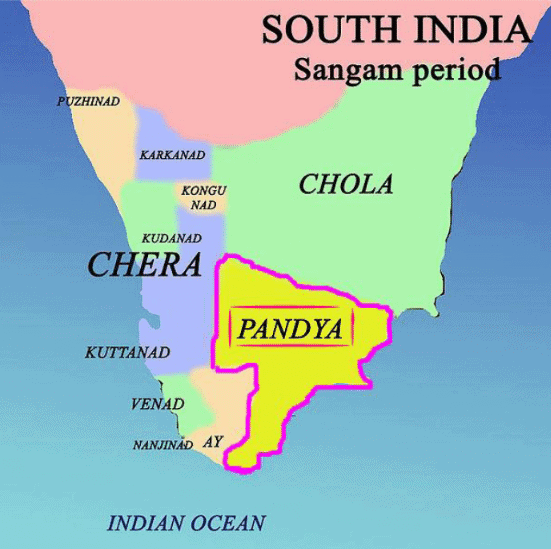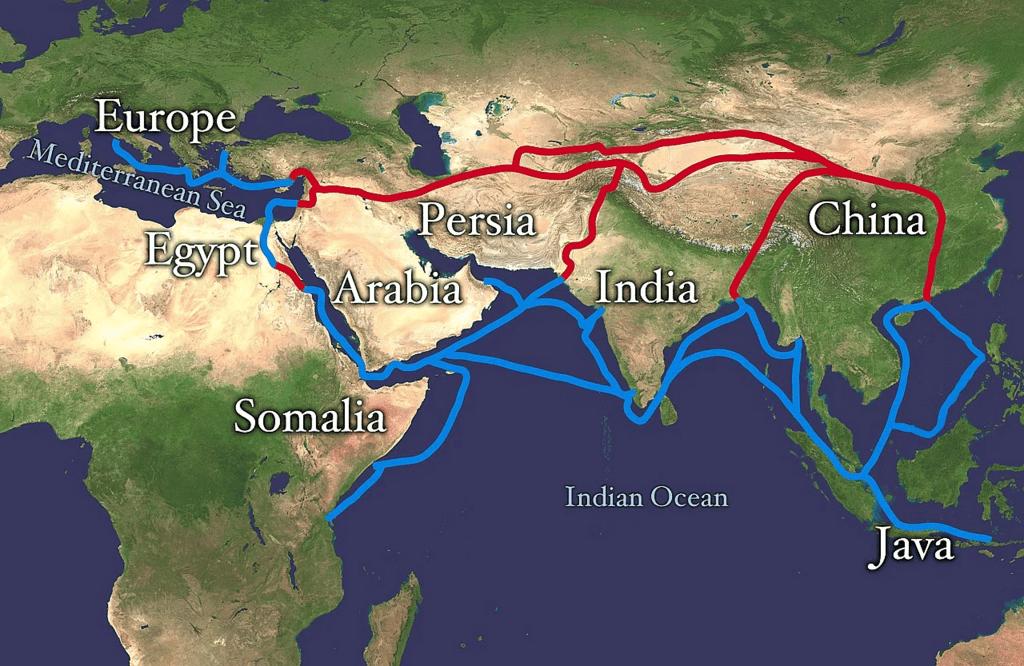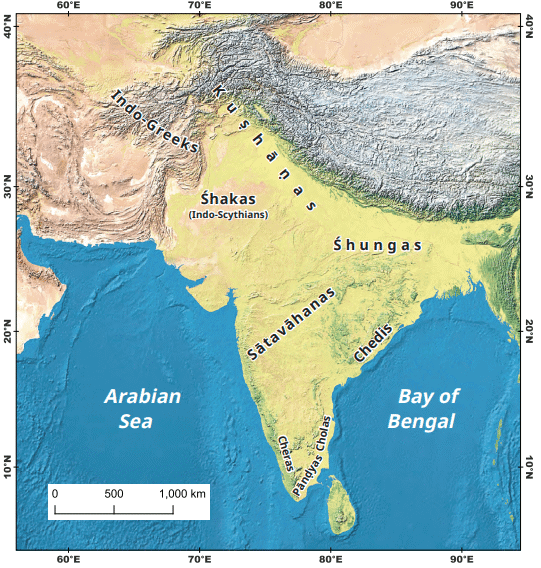Class 7 Exam > Class 7 Notes > Social Science Class 7 - New NCERT > Map Based Questions: The Age of Reorganisation
Map Based Questions: The Age of Reorganisation | Social Science Class 7 - New NCERT PDF Download
Q.1: On an outline map of India, mark and label the approximate locations of the Chera, Chola, and Pandya kingdoms during the Sangam Age.
Ans: Outline map of India is as follows;
- Chera Kingdom: Mark the western parts of Tamil Nadu and Kerala, with the capital at Vanji (present-day Karur, Tamil Nadu).
- Chola Kingdom: Mark the eastern coastal regions of Tamil Nadu, with the capital at Puhar (Kaveripattinam).
- Pandya Kingdom: Mark southern Tamil Nadu, with the capital at Madurai.

Q.2: Trace the Silk Route on a world map, marking the regions it connected, including India, Central Asia, Persia, and the Mediterranean world.
Ans: Silk Route: On a world map, trace the Silk Route (marked in red).
China to Central Asia (including regions like Bactria), Persia, and the Mediterranean world (e.g., Rome).

Q.3: On an outline map of India, Label each site with the dynasty (Shunga, Satavahana, or Chedi) associated with its development.
Ans: On an outline map of India, marked as follows:
- Bharhut Stupa: Shunga.
- Karla Caves: Satavahana.
- Pitalkhora Caves: Satavahana.
- Udayagiri-Khandagiri Caves: Chedi.

The document Map Based Questions: The Age of Reorganisation | Social Science Class 7 - New NCERT is a part of the Class 7 Course Social Science Class 7 - New NCERT.
All you need of Class 7 at this link: Class 7
|
23 videos|204 docs|12 tests
|
FAQs on Map Based Questions: The Age of Reorganisation - Social Science Class 7 - New NCERT
| 1. What were the major changes during the Age of Reorganisation in India? |  |
Ans. The Age of Reorganisation in India marked significant political and administrative changes, particularly after independence in 1947. It involved the reorganisation of states based on linguistic and cultural lines, leading to the creation of new states such as Andhra Pradesh, Gujarat, and Maharashtra, among others. This period aimed to enhance administrative efficiency and ensure better governance by aligning states with the languages and cultures of their populations.
| 2. Why was linguistic reorganisation important in the Age of Reorganisation? |  |
Ans. Linguistic reorganisation was crucial as it aimed to address the diverse cultural and linguistic identities of the Indian population. By forming states based on language, it facilitated better representation, governance, and communication for the local people. This approach helped to reduce regional tensions and fostered a sense of belonging and identity among various linguistic groups.
| 3. How did the reorganisation of states affect the political landscape of India? |  |
Ans. The reorganisation of states significantly altered the political landscape of India by creating new political dynamics and parties at the state level. It allowed regional parties to emerge, reflecting local interests and issues more effectively. This change led to a more decentralized political system, empowering states and improving local governance.
| 4. What role did the States Reorganisation Commission play during this period? |  |
Ans. The States Reorganisation Commission (SRC), established in 1953, played a pivotal role in assessing the need for state reorganisation in India. It studied the linguistic, cultural, and administrative aspects of the country and recommended the formation of states based on language. The SRC’s recommendations led to the reorganisation of states in 1956, impacting the administrative map of India significantly.
| 5. Can you explain the impact of the Age of Reorganisation on social unity in India? |  |
Ans. The Age of Reorganisation aimed to promote social unity by acknowledging and respecting the linguistic and cultural diversity of India. By creating states that reflected the demographic composition of the population, it helped to reduce ethnic tensions and foster a sense of unity among different groups. This reorganisation encouraged cooperation and dialogue among various communities, contributing to a more harmonious society.
Related Searches





















